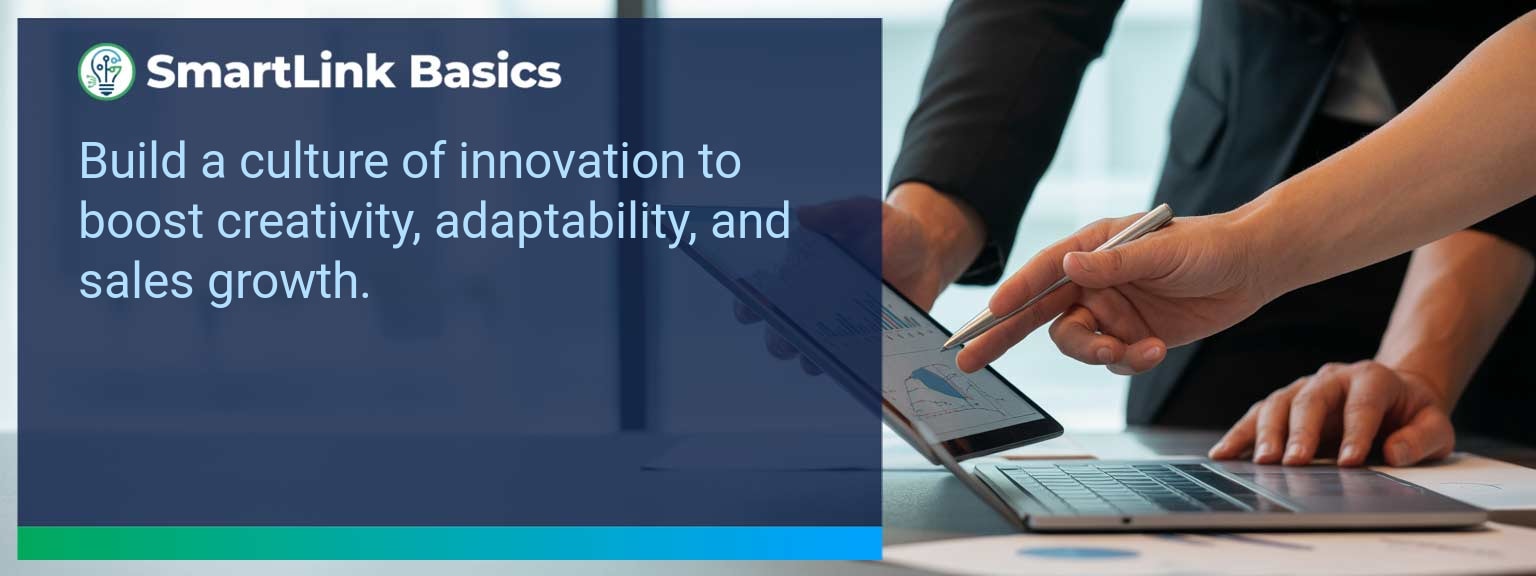Revenue organizations that fail to embrace innovation risk falling behind faster than ever before. According to Deloitte, 66% of high-performing sales teams actively experiment with new tools and processes every quarter. For leaders seeking to stay ahead, SmartLink Basics offers a proven framework for Building A Culture Of Innovation—a critical differentiator in a data-driven marketplace. This article explains why fostering innovation within your sales function drives consistent performance, how to implement enabling systems, and what metrics to track to ensure success.
- Create psychological safety to promote idea-sharing.
- Redesign sales systems and metrics to reward experimentation.
- Leverage AI and automation for real-time insights.
- Invest in continuous learning through innovative enablement programs.
- Measure impact using both leading and lagging performance indicators.
What Changed And Why It Matters Now For Building A Culture Of Innovation
Traditional sales structures prized consistency over experimentation. However, digital buyers now expect speed, insight, and personalization. Sales teams that lack innovative thinking struggle to adapt. Building A Culture Of Innovation aligns modern sales behavior with this new buyer environment—encouraging proactive problem-solving and data-driven agility. Teams that innovate outperform peers because they see change as an opportunity rather than a disruption.
Forward-looking leaders reimagine performance norms around adaptability. Psychological safety becomes a strategic tool for creativity. When team members can test new messaging or automation tools without penalization, they accelerate organizational learning. This shift from compliance to curiosity improves both morale and results.
Redesign The Revenue Operating System To Embed Innovation
Innovative sales teams require infrastructure that supports agile decision-making, not rigid performance hierarchies. Rebuilding this “Revenue Operating System” involves aligning enablement, data, and leadership rituals around iterative improvement and creative accountability.
ICP, Segmentation, And Targeting
Updating segmentation strategies helps teams discover underserved customer segments and design fresh engagement plays. Companies applying data analytics through AI tools identify micro-trends earlier, fueling a smarter sales innovation strategy.
Pipeline Architecture
Flexible pipeline design encourages reps to test innovative sales motions while preserving forecasting accuracy. Visibility into conversion rates across pilot programs informs scaling decisions. When innovation meets data clarity, risk turns into learning.
Plays And Messaging
Experimentation with pitch formats, call sequences, or digital outreach fosters a culture of creativity. For instance, one enterprise SaaS provider rotated messaging among regional teams to identify winning formats before global rollout. This decentralized approach produced faster adoption of effective messaging.
Operating Cadence
Weekly “innovation stand-ups” allow frontline teams to share micro-experiments—AI email tests, new conversation frameworks, or objection-handling scripts. This peer-driven rhythm keeps team innovation continuous rather than episodic.
Overcoming Barriers To Innovation In Sales Teams
Barriers such as fear of failure, lack of tools, and rigid oversight often suppress innovation. Leadership’s role is to neutralize these through clarity and empowerment. Define boundaries—budget limits, timeline, and decision rights—so experimentation remains focused yet open. When transparent structures coexist with flexibility, sales leadership becomes an accelerator of creativity rather than a gatekeeper.
Tools like AI forecasting engines reduce risk by validating ideas before full deployment. Instead of intuition, sales enablement software empowers smarter iteration across messaging and process workflows.
Strategies To Foster Innovation And Collaboration
Creating a sustainable innovation loop demands intentional collaboration systems. Leaders must cultivate psychological safety and celebrate curiosity. Rewarding not only wins but also “intelligent failures” signals that new thinking matters. Continuous learning sessions, peer-led playbook retros, and game-based simulations all build a high-trust, adaptable culture aligned with Building A Culture Of Innovation.
For example, a global logistics sales organization launched an Innovation Lab where each quarter teams submit pilot concepts. Selected experiments receive internal funding and data analytics support. Execution discipline combined with autonomy allowed measurable revenue growth of 12% in one year.
Measuring The Impact Of Innovation On Sales Performance
To ensure progress, leaders monitor both behavioral and business metrics. Effective measurement connects culture growth to outcomes such as conversion efficiency, deal size, and rep engagement. A balanced focus on leading, lagging, and quality indicators ensures visibility across the innovation cycle.
| Category | Metric | Definition | Target |
|---|---|---|---|
| Leading | Innovation Experiment Submission Rate | % of team members submitting new process or messaging ideas monthly | 80%+ |
| Leading | Training Session Participation | Attendance rate in monthly innovation enablement workshops | 95%+ |
| Lagging | Win Rate Improvement | % increase in qualified opportunity closure after implementing new ideas | +10% QoQ |
| Lagging | Deal Cycle Reduction | Average time from discovery to close after innovation rollout | −15% |
| Quality | Psychological Safety Index | Survey score measuring perceived safety to share new ideas | 4.5/5+ |
| Quality | Innovation Adoption Rate | % of successful pilot ideas integrated into standard workflows | 60%+ |
The Evolving Role Of Leadership In Driving Innovation
Leadership influence defines whether creativity thrives or withers. Modern sales leaders act as architects of continuous learning and psychological safety, guiding innovation momentum with accountability. Instead of issuing directives, they model curiosity—testing new frameworks and encouraging frontline insight. This evolution turns managers into mentors who question old assumptions and promote transparent experimentation.
SmartLink Basics research shows leaders who embed reflection rituals into forecast reviews increase idea-to-adoption rates by over 40%. This underscores that successful sales leadership is no longer about control but about unleashing collective intelligence through systems of trust and experimentation.
Get the 90-day plan, coaching rubric, and dashboard template to operationalize AI in your enablement program.
Sales Innovation Begins With Leadership Intention
Embedding innovation into daily sales operations transforms both performance and culture. This article outlined how to align systems, behaviors, and leadership practices that sustain creativity and growth. To advance your journey, explore the AI-driven sales enablement resources from SmartLink Basics for playbooks and tools that unite technology and human ingenuity.









